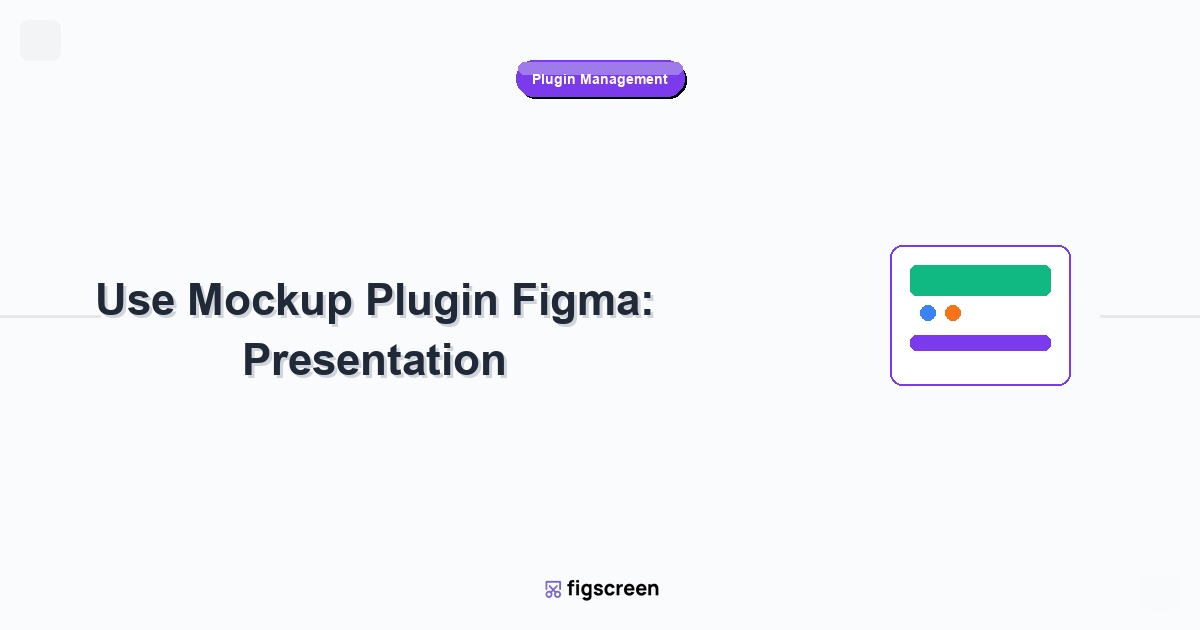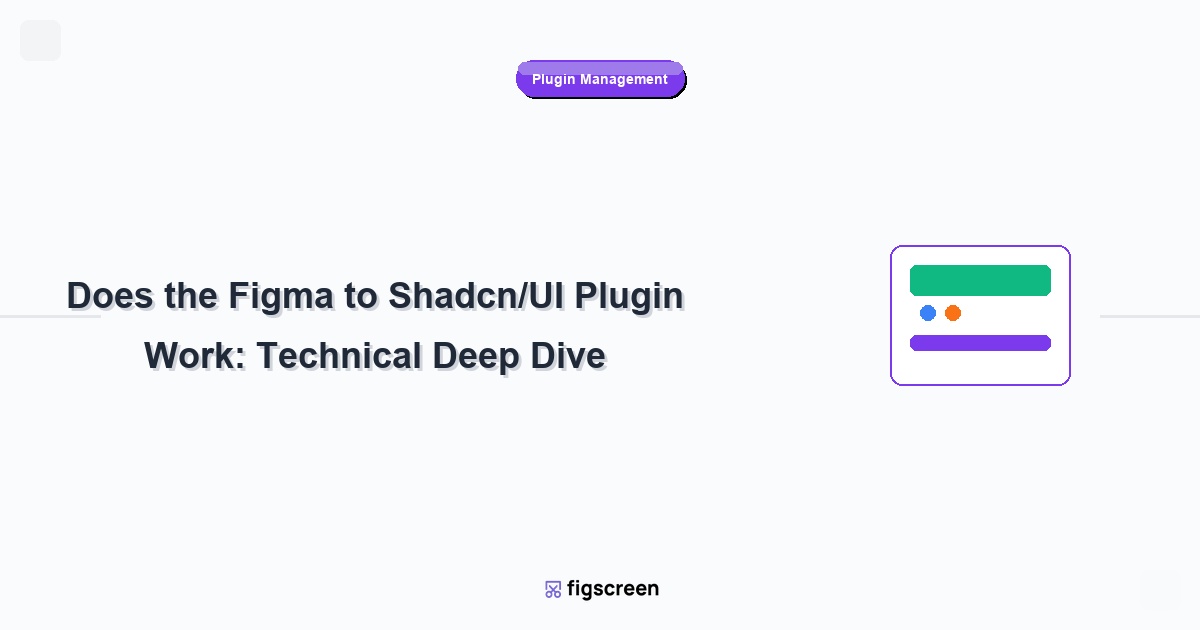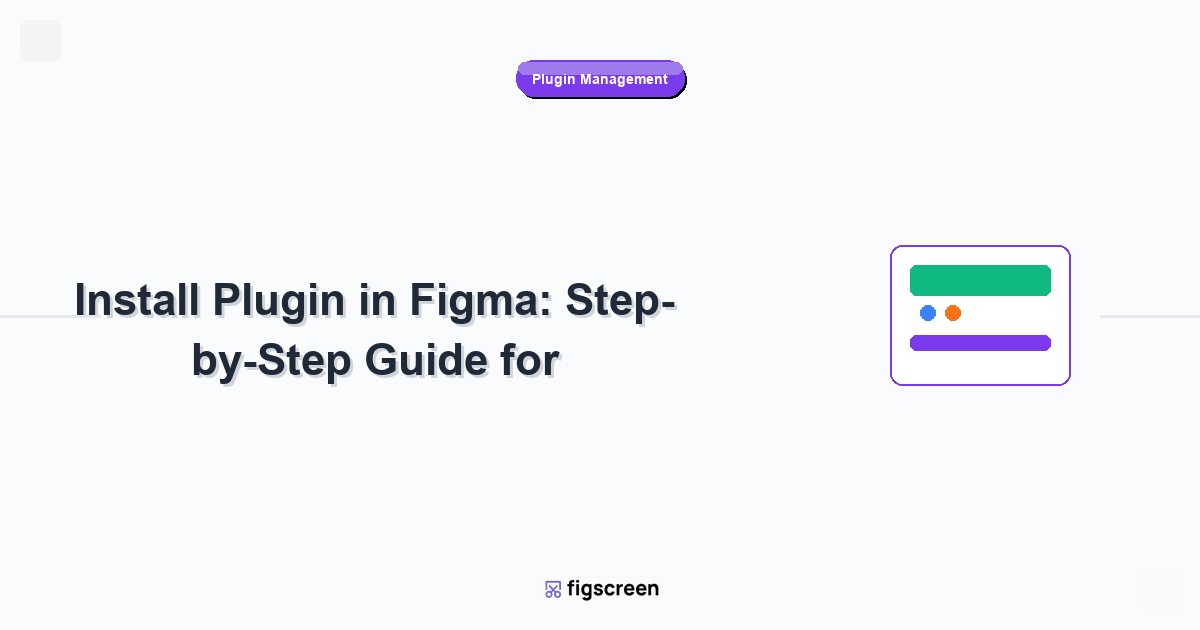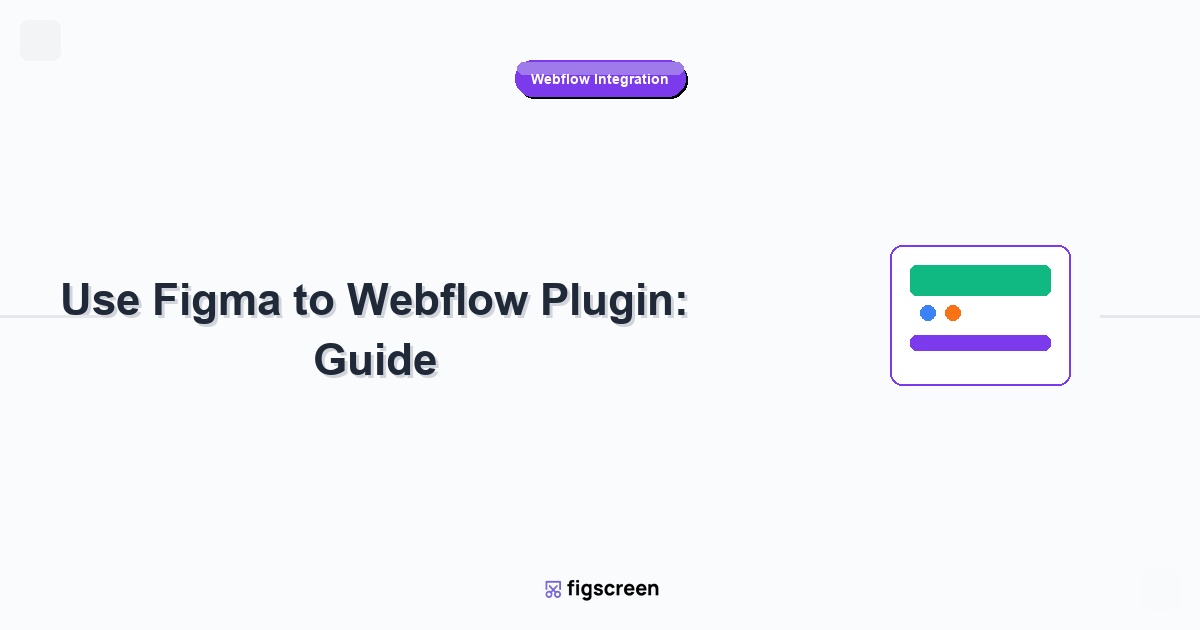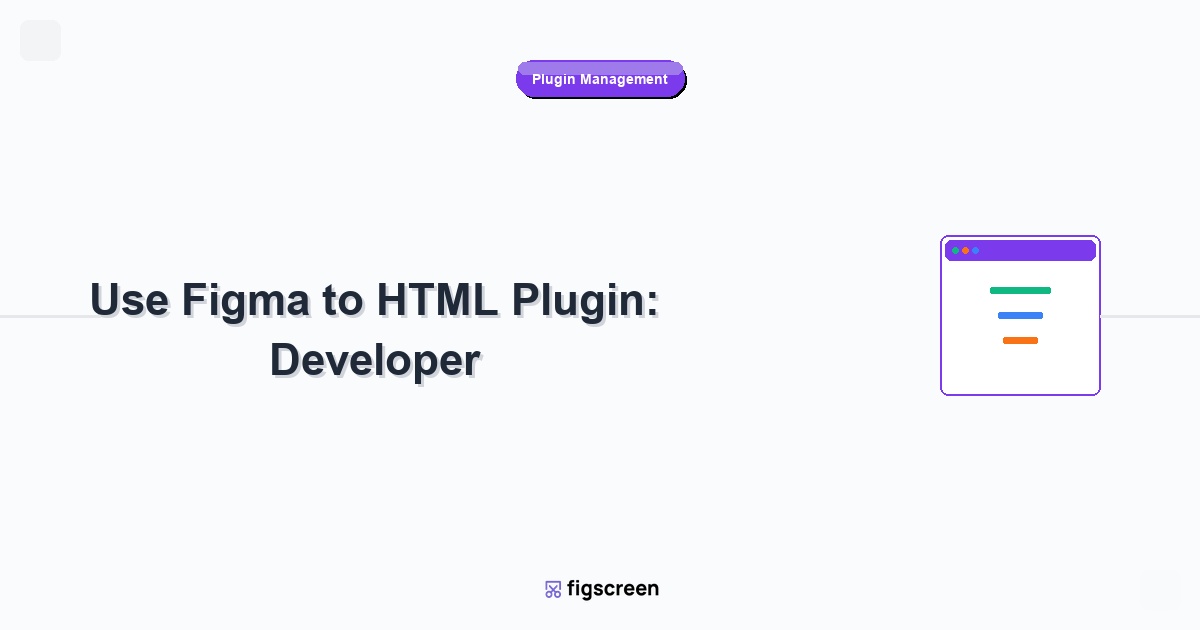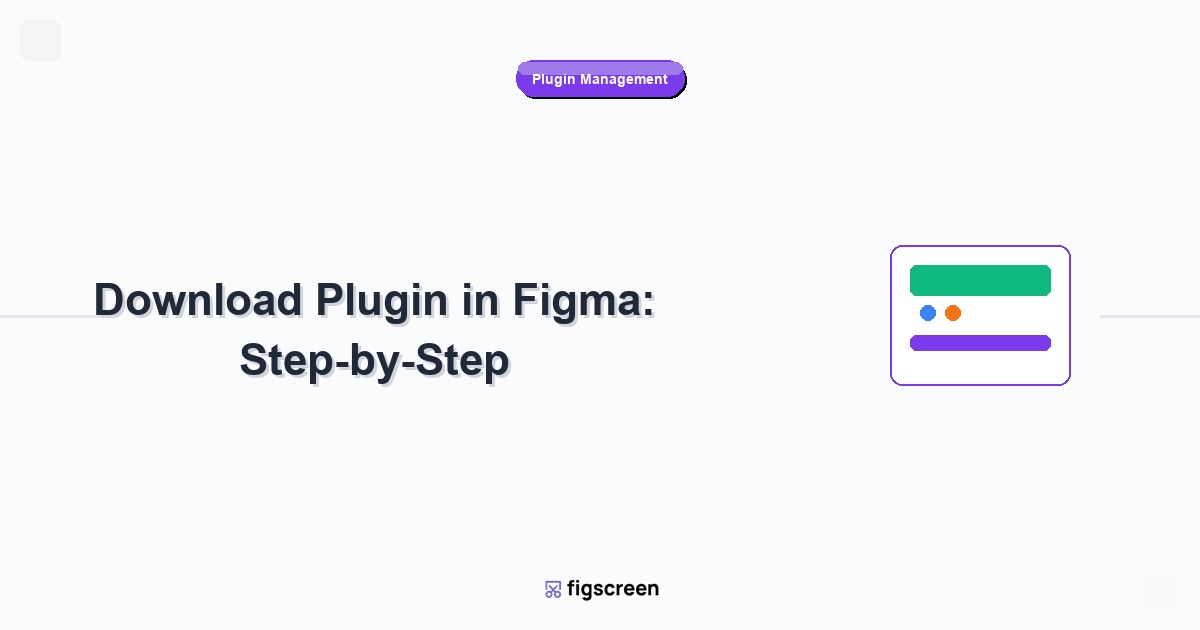Professional presentation of your designs is crucial for client approval, portfolio development, and stakeholder communication. Mockup plugins in Figma enable you to showcase your work in realistic contexts, from device screens to environmental settings, making your designs more compelling and easier to visualize in real-world applications.
Understanding Mockup Plugins in Figma
What Mockup Plugins Offer
Mockup plugins provide powerful presentation capabilities:
- Device Mockups – Display designs on realistic device screens
- Environmental Context – Place designs in real-world settings
- Perspective Views – Show designs from different angles and viewpoints
- Scene Creation – Build complete presentation scenes
- Brand Integration – Incorporate branding elements into presentations
Benefits of Using Mockup Plugins
Mockups enhance your design presentation in multiple ways:
- Professional Appearance – Polished, realistic presentation of work
- Context Understanding – Help clients visualize designs in use
- Portfolio Quality – Elevate portfolio pieces with professional mockups
- Client Approval – Increase approval rates with realistic presentations
- Marketing Value – Create compelling marketing and promotional materials
Popular Mockup Plugins for Figma
Comprehensive Mockup Libraries
Plugins offering extensive mockup collections:
- Mockuuups Studio – Large library of device and scene mockups
- Device Mockups – Focused on mobile, tablet, and desktop devices
- Artboard Studio – 3D device mockups with customization options
- Clay Mockups 3D – Modern 3D device presentations
- LS Graphics – Premium mockup collections with high-quality renders
Specialized Mockup Tools
Plugins for specific mockup needs:
- Rotato – 3D device mockups with animation capabilities
- Scene Creator – Build custom presentation scenes
- Angle Mockups – Perspective and angled device views
- Smartmockups – Quick and easy mockup generation
- Placeit – Lifestyle and environmental mockups
Installing and Setting Up Mockup Plugins
Plugin Installation Process
Install mockup plugins through Figma Community:
- Browse Community – Search for mockup plugins in Figma Community
- Evaluate Options – Compare features, quality, and user reviews
- Install Selected Plugins – Add chosen mockup plugins to your account
- Check Permissions – Review and accept necessary plugin permissions
- Test Functionality – Verify plugins work correctly with test designs
Account Setup and Licensing
Many mockup plugins require additional setup:
- Account Creation – Some plugins require separate service accounts
- Subscription Management – Understand free vs. premium features
- License Agreements – Review usage rights for commercial work
- Download Limits – Understand any restrictions on mockup usage
Basic Mockup Creation Workflow
Preparing Your Design for Mockups
Optimize your designs before creating mockups:
- Frame Sizing – Ensure designs match target device dimensions
- Resolution Check – Use appropriate resolution for quality mockups
- Content Completion – Finalize all design elements before mockup creation
- Export Preparation – Organize layers and components for easy selection
Standard Mockup Creation Process
Follow this general workflow for most mockup plugins:
- Select Your Design – Choose the frame or component to mockup
- Launch Mockup Plugin – Open your chosen mockup plugin
- Browse Mockup Library – Find appropriate device or scene mockup
- Apply Design to Mockup – Place your design into the mockup template
- Adjust and Position – Fine-tune placement and sizing
- Customize Appearance – Modify colors, shadows, and effects as needed
- Export or Save – Generate final mockup for presentation
Device Mockup Techniques
Mobile Device Mockups
Create compelling mobile presentations:
- iPhone Mockups – Latest iPhone models with accurate proportions
- Android Device Variety – Popular Android phones from different manufacturers
- Screen Variations – Different screen sizes and aspect ratios
- Orientation Options – Portrait and landscape presentations
- Multiple Views – Front, back, and side perspectives
Desktop and Laptop Mockups
Showcase web and desktop applications effectively:
- MacBook Mockups – Various MacBook models and sizes
- iMac Presentations – Desktop computer mockups
- PC Alternatives – Windows laptops and desktop computers
- Monitor Mockups – Standalone monitor presentations
- Workspace Scenes – Complete desk and office environments
Tablet and Hybrid Device Mockups
Present tablet and convertible device designs:
- iPad Variations – Different iPad models and sizes
- Android Tablets – Popular Android tablet devices
- Surface Devices – Microsoft Surface tablets and laptops
- Hybrid Configurations – Devices in different usage modes
Advanced Mockup Customization
Perspective and Angle Adjustments
Create dynamic and engaging presentations:
- Isometric Views – Technical and professional-looking angles
- Perspective Shots – Realistic viewing angles
- Flat Lay Compositions – Top-down arrangement of devices
- Environmental Integration – Devices in natural settings
- Action Shots – Devices being used in real scenarios
Lighting and Shadow Effects
Enhance realism with proper lighting:
- Natural Lighting – Soft, realistic lighting effects
- Shadow Customization – Adjust shadow direction and intensity
- Reflection Effects – Add surface reflections for premium feel
- Ambient Lighting – Environment-appropriate lighting
- Dramatic Effects – Creative lighting for visual impact
Background and Environment Selection
Choose appropriate contexts for your designs:
- Minimal Backgrounds – Clean, distraction-free presentations
- Lifestyle Settings – Real-world usage environments
- Professional Contexts – Office and business settings
- Creative Environments – Artistic and design-focused backgrounds
- Brand-Aligned Scenes – Backgrounds that match brand aesthetics
Creating Presentation Scenes
Multi-Device Presentations
Show responsive designs across device types:
- Plan Device Combination – Select complementary device types
- Arrange Composition – Position devices for visual balance
- Maintain Consistency – Ensure consistent lighting and perspective
- Show Continuity – Demonstrate how design adapts across devices
- Create Visual Hierarchy – Emphasize primary device while showing others
Storytelling Through Mockups
Use mockups to tell compelling design stories:
- User Journey Visualization – Show different stages of user interaction
- Feature Highlighting – Emphasize key features through mockup selection
- Context Demonstration – Show where and how designs will be used
- Problem-Solution Narrative – Illustrate how design solves user problems
Best Practices for Mockup Usage
Quality and Consistency Standards
Maintain professional quality across all mockups:
- High Resolution – Use high-quality source images and mockups
- Consistent Style – Maintain visual consistency across presentation
- Accurate Proportions – Ensure designs fit naturally in mockups
- Realistic Appearance – Avoid obviously fake or distorted presentations
- Brand Alignment – Choose mockups that align with brand personality
Effective Mockup Selection
Choose mockups that enhance your design presentation:
- Audience Consideration – Select mockups appropriate for your audience
- Context Relevance – Ensure mockup context matches design purpose
- Quality Assessment – Use only high-quality, professional mockups
- Uniqueness – Avoid overused or clichéd mockup presentations
- Versatility – Choose mockups that work for multiple design variations
Portfolio and Client Presentation
Portfolio Enhancement Strategies
Use mockups to elevate your portfolio:
- Project Context – Show designs in their intended environment
- Professional Polish – Add commercial-quality presentation layer
- Visual Interest – Create engaging, scroll-stopping portfolio pieces
- Skill Demonstration – Show understanding of real-world application
- Brand Storytelling – Use mockups to tell project stories
Client Presentation Best Practices
Present designs effectively to clients:
- Clear Communication – Use mockups to clarify design intent
- Realistic Expectations – Show how designs will actually appear
- Multiple Scenarios – Present designs in various usage contexts
- Interactive Elements – Show different states and interactions
- Implementation Vision – Help clients visualize final product
Workflow Optimization
Efficient Mockup Workflows
Streamline your mockup creation process:
- Template Creation – Build reusable mockup templates
- Batch Processing – Create multiple mockups efficiently
- Asset Organization – Organize mockup assets for easy access
- Style Libraries – Maintain consistent mockup styles
- Automation Tools – Use plugins that automate repetitive tasks
Team Collaboration
Coordinate mockup usage across teams:
- Shared Standards – Establish team mockup guidelines
- Asset Libraries – Create shared mockup asset collections
- Quality Control – Review processes for mockup presentations
- Brand Consistency – Ensure all team mockups align with brand
Troubleshooting Common Issues
Technical Problems
Resolve common mockup plugin issues:
- Loading Problems – Check internet connection and plugin updates
- Quality Issues – Ensure source designs are high resolution
- Placement Accuracy – Adjust design positioning for proper fit
- Export Failures – Check file size limits and export settings
- Performance Slowdowns – Close unnecessary plugins and restart Figma
Quality and Appearance Issues
Address common visual problems:
- Distorted Proportions – Verify design dimensions match mockup requirements
- Poor Image Quality – Use higher resolution source materials
- Inconsistent Lighting – Adjust mockup lighting to match design content
- Unrealistic Appearance – Choose more appropriate mockup styles
Future of Mockup Technology
Emerging Trends
Stay current with mockup technology evolution:
- 3D Integration – More sophisticated 3D mockup capabilities
- AR/VR Mockups – Immersive presentation technologies
- AI-Generated Mockups – Artificial intelligence creating custom mockups
- Interactive Mockups – Mockups that demonstrate functionality
- Real-Time Updates – Mockups that update automatically with design changes
Preparing for Evolution
Future-proof your mockup skills:
- Technology Awareness – Stay informed about new mockup technologies
- Skill Development – Learn 3D and motion design principles
- Platform Adaptation – Be ready to adapt to new presentation platforms
- Quality Standards – Maintain high standards as technology improves
Conclusion
Mockup plugins in Figma are powerful tools for creating professional, compelling presentations of your design work. By mastering these plugins and understanding how to use them effectively, you can significantly enhance your portfolio, improve client communication, and create more persuasive design presentations.
Remember that the best mockups serve the design rather than overshadowing it. Choose mockups that enhance understanding and appreciation of your work while maintaining focus on the design solutions you’ve created. With practice and attention to detail, mockup plugins can become invaluable tools in your design presentation toolkit.
Perfect Your Design Presentation Workflow
While mockup plugins create stunning presentations, Figscreen captures the real-world inspiration that informs your design decisions. Combine real research with perfect presentation for complete design excellence.
